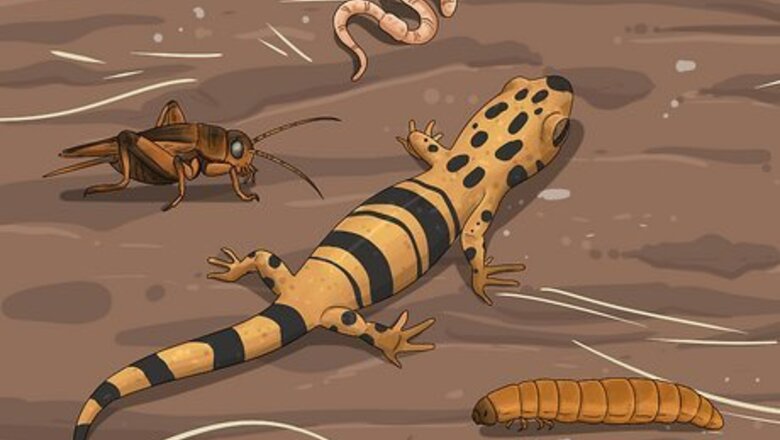
views
Choosing the Type of Food
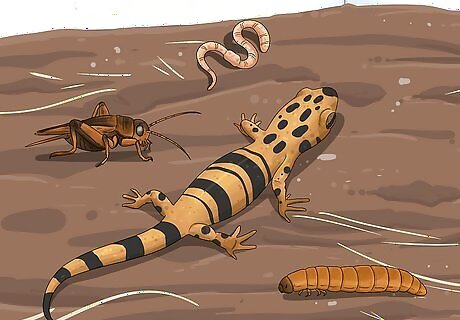
Feed land-dwelling salamanders bugs. Salamanders who live on land thrive off of a diet of worms and bugs. You don’t have to go out into your yard and search for these bugs, though. This salamander food can be found at most pet stores. For example, though you might find it gross, your salamander will enjoy eating crickets, earthworms, meal worms, maggots, buffalo worms, and mosquito larvae. This sort of food provides plenty of nutrition for your salamander.
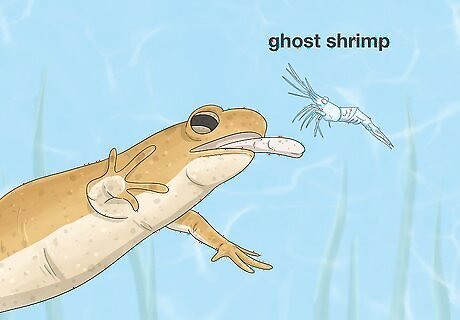
Feed aquatic salamanders water organisms. Regular bugs just won’t cut it for a water-dwelling salamander. They eat things that swim around in the water, like shrimp. You can also get these foods at a pet store. You may also be able to purchase them at tackle shops. Brine shrimp is the most common food for an aquatic salamander. They also enjoy small fish like minnows, other types of shrimp like ghost shrimp and crayfish, nightcrawlers, and worms like earthworms and blackworms.
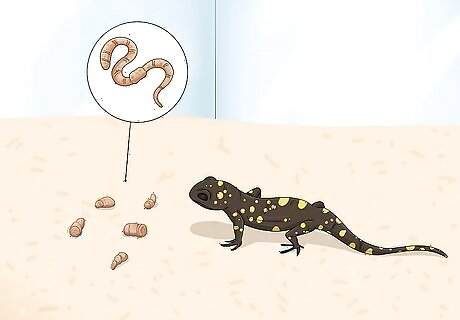
Choose appropriately-sized food. If you have a small species of salamander or a juvenile, you should feed them smaller bugs. Their mouths are too small to eat large bugs. Go for small foods, like fruit flies, small grubs, small crickets, and worms cut into smaller pieces. Avoid feeding small salamanders large bugs. Only feed larger bugs to larger salamanders.
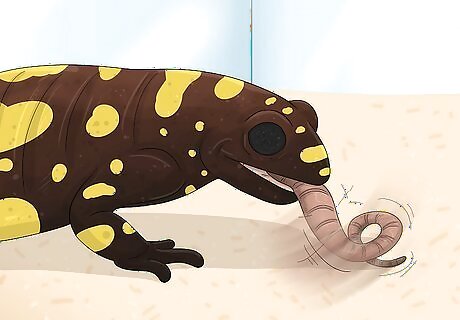
Feed the salamander live foods. Most salamanders prefer to hunt for live food instead of eating dead food. This means you should feed your salamander live worms, bugs, and shrimp instead of dead ones. Fire salamanders are a unique species and do like dead food, so you can feed them chopped up bits of worms. They can even be fed from trays.
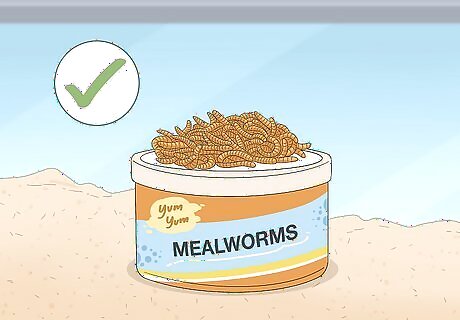
Avoid wild caught food. Some people will go outside and get bugs to feed their salamander. However, this can pose risks for your salamander. The bugs you catch may have diseases or have been exposed to chemicals. Get your food from pet stores, bait shops, and dealers who sell live food.
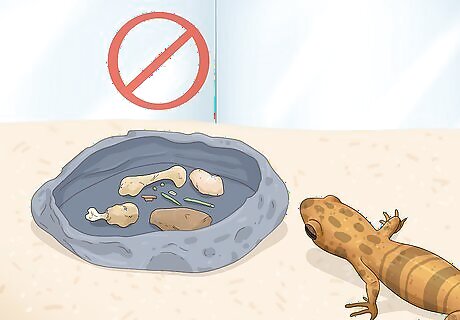
Do not try to feed your salamander any human foods. Your salamander will not see any kind of meat, vegetables or fruit you try to feed it as food, and even if it did try to eat it, it would not be able to digest it! Only choose foods that you can find in their natural habitats. All bugs and small invertebrates make yummy meals for your salamander.
Establishing a Feeding Routine
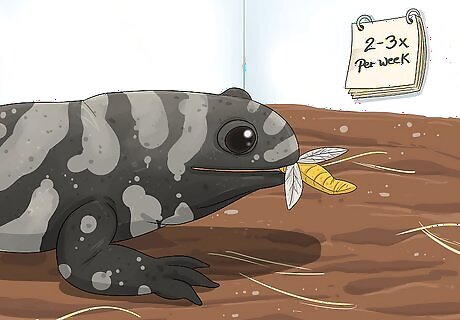
Feed salamanders a few times a week. You don’t have to feed salamanders every day. Many adult salamanders can be fed two to three times each week. You can look up your particular species of salamander to determine exactly how many times each week they should be fed. Even better, you might consult with a reptile veterinarian or a local herpetological society for some advice, particularly if you are having any problems.
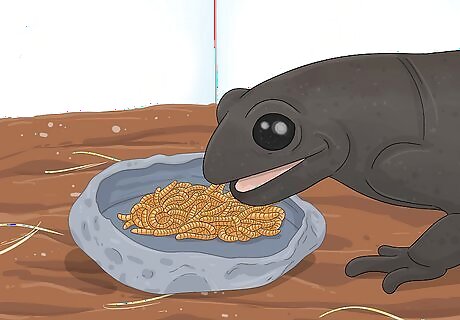
Give enough food for one sitting. Salamanders should have just enough food that they can eat in one sitting. Roughly, they should be able to eat this food in 15 to 20 minutes. Watch your salamander to figure out how much they can eat in that time period. After a few feedings, you will figure out how much to feed them. If your salamander starts to get fat, you can feed them less. If they are leaving food, feed less next time.
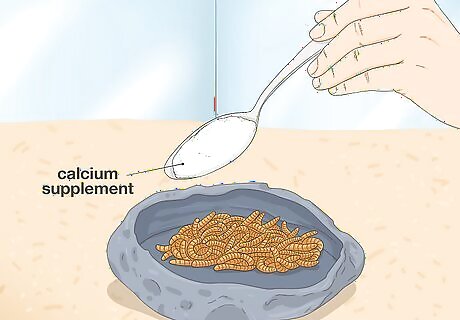
Sprinkle the food with supplements each week. You can help keep your salamander healthy and looking great by giving them supplements in their food. They should have a calcium supplement every time you feed them, and a multi-vitamin once or twice each week. You can buy these supplements at pet stores or online.
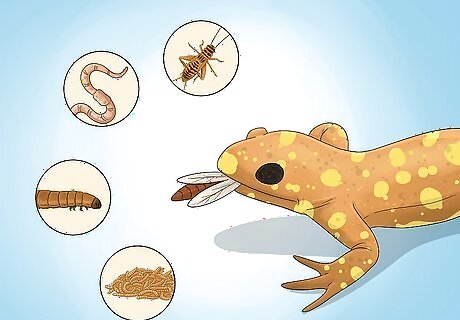
Vary the diet. Salamanders don’t need to eat the same thing every time they are fed. In the wild, they would have access to many types of bugs and invertebrates. Keep your salamander healthy by feeding them a varied diet filled with many different kinds of foods.
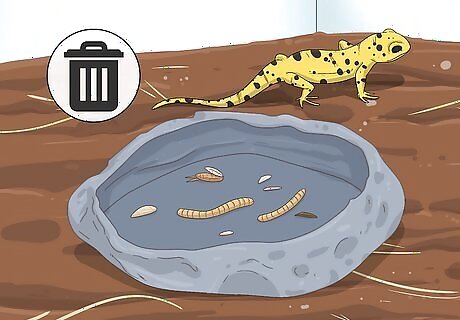
Remove uneaten food. Never leave food that the salamander didn’t eat for later. It won’t have a midnight snack. Instead, remove all live bugs from the vivarium. Bugs left in the tank can bite or cause irritation to your salamander. If your salamander has an aquatic vivarium, you should remove all the leftover food from the water. This can lead to bacteria and contamination of the water.
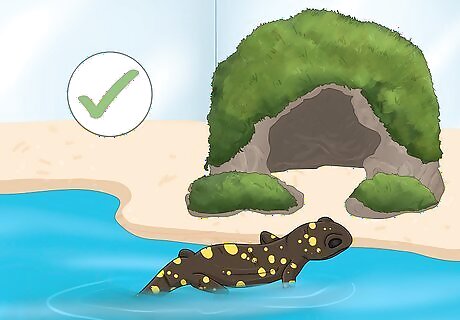
Keep salamanders hydrated. Salamanders don’t drink water the way other pets do. They are amphibians, which means they soak water into their bodies through the skin. They get this water from pools in their vivarium. Keep the substrate on the bottom of the tank hydrated. It should have pools of water along the bottom but not be completely drenched. Use a spray bottle to rehydrate the substrate. Make sure to use water that does not have chlorine in it. Use bottled water or tap water that has been left to air out overnight. You can also buy water conditioner at pet stores.
Addressing Feeding Problems
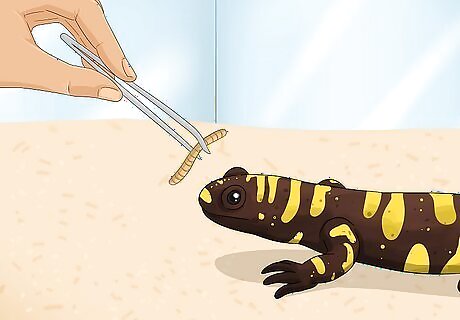
Feed a reluctant salamander by hand. If your salamander isn’t eating, you should try feeding it yourself. You can put the live bug on a toothpick or pick it up with tweezers. Hold the bug steady above the salamander and wait for the salamander to eat it. Salamanders may not eat when you first get them. They may also be resistant to new foods. Try hand-feeding them before changing foods or consulting a vet.
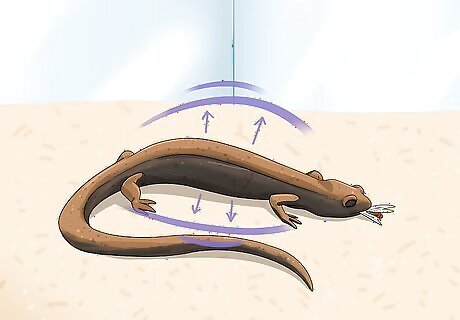
Feed it daily for a while if you bought it at a pet shop. Salamanders that are purchased from a pet shop are usually underfed and skinny. This means that you should feed them daily until your salamander adjusts to living in their new environment and puts on some healthy weight.
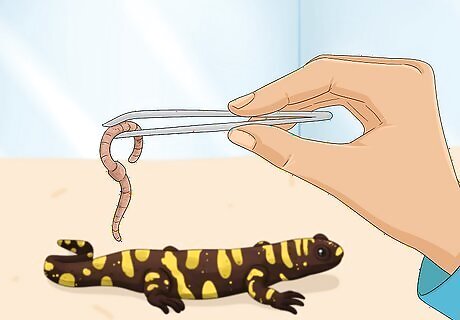
Adjust the salamander’s feeding schedule if needed. There may be reasons why your salamander needs to be fed more or less. For example, they usually need more food in the summer and less in the winter. That means that the two to three times a week guideline may need to be adjusted. Juvenile salamanders need to be fed more often. If your salamander is too skinny, you may want to feed it more often.




















Comments
0 comment